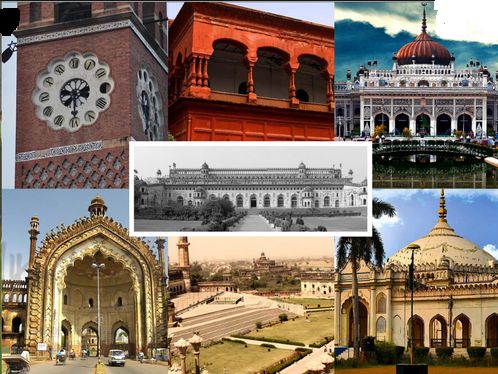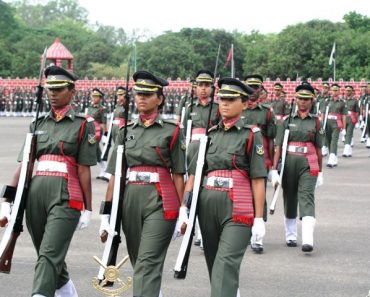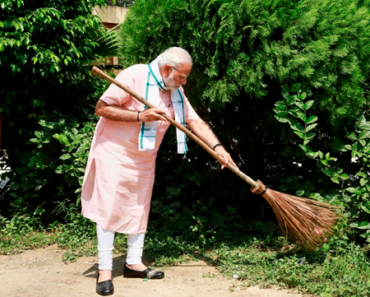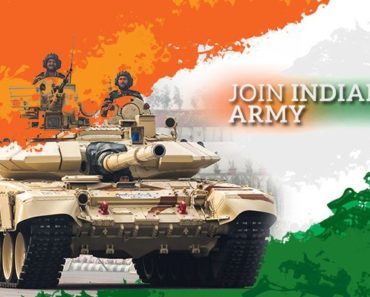 Lucknow History Ancient, Glorious & Grand Story of Lucknow
Lucknow History Ancient, Glorious & Grand Story of Lucknow
Mythological and Vaidik History Of Lucknow
Ancient History of Lucknow: Lucknow, the capital of Uttar Pradesh was historically known as the Awadh region. Today, it is the administrative headquarters of Lucknow District and Lucknow Division. Fondly known as the ‘City of Nawabs’ or the ‘City of Tehzeeb’, it has always been a city filled with varied cultures.
Its beautiful sprawling gardens, polite mannerisms, fine cuisine, music, and poetry (Shayari), had found patronage in the Shia Nawabs of the city who loved Persian.
Legendary Lucknow: Lucknow was part of the ancient Kaushal state. It was the legacy of Lord Rama that he dedicated to his brother Lakshmana.
History of Lucknow
First Freedom Struggle 1857 Lucknow’s Contribution
| Indian Revolution of 1857 | |
|---|---|
| During the first war of independence | From 1857 to 1858, the Hamis of Begum Hazrat Mahal led by Raja Jayalal Singh revolted against the British East India Company; Later, he recaptured Lucknow and declared his son Birjis Qadr as the Vali (ruler) of Awadh. |
| 1857 revolution in Lucknow | The 1857 revolution in Lucknow was led by Begum Hazrat Mahal. He placed his minor son Birjis Kadar on the throne and took on the English army himself. They had an unprecedented capacity of organization and that is why the zamindars, peasants and soldiers of Awadh continued to lead under their leadership. |
| During the Battle of Alambagh | During the Battle of Alambagh, Hazrat Mahal cheered up his brave soldiers and rode on an elephant and fought with his soldiers day and night. After the defeat in Lucknow, she went to the countryside of Awadh and there she sparked the spark of revolution. |
| British authority | In 1856 AD, the British overthrew Wajid Ali Shah, abolished the princely state of Awadh and annexed it to the British Empire without taking the war. In the first freedom struggle of India in 1857 AD, the people of Lucknow took possession of the Residency and other buildings, but soon the British came to the hands of the British and the soldiers of the War of Independence were severely punished. |
| Sir Henry Lawrence, Residency Campus | A rebellion erupted in the state of Avadh (also known as Avadh, in modern day Uttar Pradesh), which had been occupied barely a year earlier. Sir Henry Lawrence, a British commissioner resident in Lucknow, had enough time to consolidate his position inside the residency complex. The rebels' attacks were unsuccessful and so they began bombarding artillery and gun fire in the complex. After 90 days of siege, the number of company forces was reduced to 300 loyal soldiers, 350 British soldiers and 550 non-combatants. |
| Lord Dalhousie-usurp policy | Lord Dalhousie planned to merge Awadh with the British Empire. In 1848, he sent Colonel Sleeman to Lucknow as a resident. In 1854, Outram came to India in place of Sleeman and he also said in his description that the administration of Awadh is very corrupt and the condition of the people is very lamentable. |
| Nawab Wajidali Shah defective charge | The Nawab of Awadh accused Wajidali Shah of disqualification and defective rule and proposed to accept a treaty, according to which the Awadh state was included in the British Empire by giving an annual pension of Rs 12 lakh to the Nawab. But the Nawab did not accept this treaty. As a result, Lord Dalhousie sent an army to Awadh and took the Nawab to the throne and took control of Awadh. |
| Rebels' camp at Sikandar Bagh | One of the most fierce battles in Lucknow took place in November 1857 at Sikandar Bagh. The rebels had camped at Sikandar Bagh. |
| Hazrat Mahal's Battle of Chin | Hazrat Mahal crowned his 11-year-old son Birjis Qadr under the Mughal throne as Awadh on 5 June 1857, following a resounding victory by the rebel army at the Battle of Chinhat. |
| Uda Devi, a good shooter and adventurer | According to a legend, the British came to know by voice that someone was climbing on a tree and firing bullets. When they cut down the tree, they came to know that there was no firing man but a woman, who was later identified as Oda Devi. Her idol is today adorning the Chowk situated outside Sikandar Bagh in Lucknow. |
| British Subjugation | It is said that the British sent three resolutions. She even offered to return the coronation of her husband in British subjection, But Begum did not agree to it. She wanted nothing less than a free right. Begum needed everything, or nothing. |
| First session in 1899 | The first session of the Congress was held in Lucknow in 1899. Babu Ganga Prasad Verma, Pandit Vishnu Narayan, Hafiz Abdurrahman, Pandit Madan Mohan Malviya, A. Nandi etc. were elected as members of the organization committee at Lucknow session. |
| Establishment of Muslim League | The Muslim League was established in 1906. Jinnah joined the Muslim League in 1913 and presided over the 1916 Lucknow session. Jinnah was the agent of the 1916 Lucknow Pact. The agreement was reached between the League and the Congress. This common platform of the Congress and the Muslim League became a stage of self-government and struggle against the British exploiters. |
| Gandhiji's visit to Lucknow | Mahatma Gandhi had also mentioned in his article titled 'Neel Ke Daag' that Gandhiji had come to Lucknow for the first time on 26 December 1916 at the session of Congress. Moti Lal Nehru, Jawaharlal Nehru and Syed Mahmood addressed the people at the convention. |
| Lucknow agreement | The agreement reached by the Indian National Congress and the All India Muslim League in December 1916 was passed by the Indian National Congress at the Lucknow Session on 29 December 1916 and the All India Muslim League on 31 December 1916. Jinnah emerged in Indian politics as a Congress leader in 1916, who had signed a Lucknow pact with the Muslim League, emphasizing Hindu-Muslim unity. |
| 1916 to 1939 | During his stay in Lucknow several times between the years 1916 to 1939, Gandhiji had not only strategized against the British rule but also gave the message of education, health and environmental protection. In the year 1926, Jawaharlal Nehru, Pandit Madan Mohan Malaviya, Sarojini Naidu had a strategy with the freedom fighters. |
| Congress session held in Lucknow | Gandhiji participated in the Congress session held in Lucknow from 26 to 30 December 1916. It was then that Gandhiji proposed to stop the practice of recruiting workers and taking them abroad. Gandhiji met Jawaharlal Nehru for the first time at the convention itself. Participated in the Muslim League Conference on 31 December 1931 and churned on the fight for independence. |
| Gandhi-Nehru was also engaged in Municipality Building | The strategy for independence was also made at the Municipal Corporation Headquarters (then Municipality) on Trilok Nath Road in Lalbagh. On October 17, 1925, on a three-hour stay in Lucknow, Gandhiji accepted the welcome letter of the municipality and gave a speech in a public meeting at Triloknath Hall (where it now houses the Municipal Corporation). The inscription outside Gandhi Municipal Corporation still reminds Gandhiji's memory. |
| Gandhiji in 1936 | In the year 1936, Gandhiji lived for the most time from 28 March to 12 April and by attending all the events, people were made aware to take iron from the British rule. On 26 December 1916, he was addressed with Nehru in a meeting held at Charbagh station. In March 1936, Gandhi again came to Lucknow for the second time to attend the Congress session held under the chairmanship of Jawaharlal Nehru. |
| Quit India Movement | On 9 August 1942, the British Quit India Movement was announced in the whole country on the call of Mahatma Gandhi. It is also known as August Revolution Day.There was tremendous preparation for the movement in Lucknow too. When the British got an inkling, they laid siege to the security forces of Aminabad's flag park and Ghantaghar Park by imposing Section 144 in Lucknow so that no agitators could enter the parks. |
| United Provinces or 'U.P'. | In 1902, the name 'North West Provinces' was changed to 'United Provinces of Agra and Awadh' which in common parlance was called 'United Provinces' or 'UP'. In 1920, the state capital was changed from Allahabad to Lucknow. After independence, on 12 January 1950, it was renamed as Uttar Pradesh and Lucknow became its capital. |
Ruler of Lucknow In History & City of Nawabs
| Famous, Effective, Honored Person and Places, Lucknow History | |
|---|---|
| Kaushal State: | It is said that Awadh King Shri Ram dedicated this land to his brother Lakshman and named it "Lakshmanpur".Lakshman is also called Lakhan in North India. Hence it was also known by the name "Lakhanpur". |
| The city was known by the name of Lakhanpur (or Lakshmanpur) until the 11th century. Lucknow is located in an area which was historically known as the Awadh region. Lucknow was a part of the ancient Kaushal state. | |
| Vedic Period: | In the old part of the city of Lucknow, there is an elevated dhuh, called Lakshmanatila.Vedic carpet remains have been found in archaeological excavations here. |
| It is said that on Lakshmantila there was an ancient temple of Laxmanji, which was built by the Mughal emperor Aurangzeb, after it was torn down and built a mosque. | |
| Lucknow in Treta Yuga: | The ancient name of this city was 'Laxmanpur' or 'Laxmanavati' and it was founded by Anuj Laxman of Shri Ramchandra ji, which later changed to be known as Lucknow.It was part of the ancient Kosala kingdom. This was the legacy of Lord Rama, which he dedicated to his brother Lakshmana. |
| Ayodhya, the capital of Shri Rama, is also located just 80 miles from here. In the old part of the city there is a high ridge, which is still called 'Lakshman Tila'. | |
| Lakhnavati to Lucknow: | It is said that it was named Lakhnavati after the wife of 12th century King Lakhan. |
| City of gardens: | Lucknow, situated on the banks of the Gomti River, came to be called the city of Nawabs in the Muslim era and presently Lucknow is called the "city of gardens". |
| Lucknow is called the city of orchards. Bagh is identifying here. This is the reason that many areas of Lucknow have a garden in the last of the names.Charbagh, Alambagh, Lalbagh, Kaiserbagh, Bandariabagh are areas where gardens once used to be orchards. | |
| Evening of Awadh, 'Awadh' means Lucknow: | There is a famous saying in India 'Morning of Banaras, Evening of Awadh'. 'Awadh' means Lucknow, and Lucknow is a city which is world famous for its tameez, tehzeeb and nafasat liking. |
| Lucknow stands on one side taking pride of its historic buildings, while on the other hand it is also embellished with new crafts. | |
| Evening of Awadh, 'Awadh' means Lucknow: | Lucknow was known by the names Lakshmanpur, Lakhanpur and Lakhanavati etc. in ancient times which later changed to Lucknow.In the 17th century, when it was chosen as the capital of Awadh by the Nawabs, it was renamed Lucknow. |
| The present form of Lucknow was founded by Nawab Asaf-ud-Daula in 1775 AD. It is also known as Golden City of the East, Shiraz-e-Hind and Constantinople of India. | |
| 1350 AD: | After 1350, Lucknow and parts of Awadh province were under the Delhi Sultanate, Mughal Empire, Nawabs of Awadh, East India Company and British Raj. |
| Lucknow has been one of the main centers of India's first freedom struggle, actively supported the Indian freedom struggle and has emerged as an important city of North India after the independence movement. | |
| 1719 AD: | By 1719, Awadh Suba was the territory of the Mughal Empire, ruled by the emperor appointed governor.Shadat Khan, also known as Burhan ul Malik, was a Persian adventurer, he was appointed the Nizam of Awadh in 1722 and established a court at Faizabad near Lucknow. |
| The British appointed a resident in 1773 and gradually took more areas of the state under their control.He did not want to take Awadh completely under his control because by doing so he would have to face the Marathas and the remaining Mughal empires. | |
| Laxman Tila: | Old Lucknow was situated near the Laxman mound.Old Lucknow was situated near the Laxman mound. Now the name of 'Lakshman Tila' has been completely erased. This has been coerced with the culture of Lucknow. |
| On the Laxman mound was the rest of the cave where a big fair was held. This cave was demolished at the time of Khilji and after that the place was turned into a mound. Aurangzeb later built a mosque here which came to be known as the mound with mosque. | |
| Mughal architecture: | The ancient history of Lucknow is inaccessible.The history of its special advancement seems to have started only after the medieval period, because in the Hindu period, Lucknow remained almost unknown due to the special importance of Ayodhya. |
| First of all, the 'Akbari Darwaza' located in the Chowk was constructed during the time of Mughal Emperor Akbar.Even in the era of Jahangir and Shah Jahan, buildings were built, but the real progress of Lucknow took place during the Nawabi period. | |
| Economy of Lucknow District: | Lucknow is the capital and largest city of the Indian state of Uttar Pradesh. It is the eleventh most populous city and the 12th most populous urban structure.It is the eleventh most populous city and the 12th most populous urban structureIt is the eleventh most populous city and the 12th most populous urban structure. |
| Lucknow has always been known as a multicultural city that became a North Indian cultural and artistic center and a center of power for the Nawabs in the 18th and 19th centuries. It governed, administration, education, commerce, aerospace, finance, pharmaceuticals, technology. , Has been an important center of design, culture, tourism, music and poetry. | |
Lucknow is situated at an elevation of about 123 meters (404 ft) above sea level. The Lucknow district covers an area of 2,528 square kilometers (976 sq mi). Lucknow is the center of Shia Islam in India which has the largest Shia Muslim population in India.
Nawabi Tradition
Nawabi tradition started in 1720: The Mughal Empire of Delhi began to disintegrate during the time of Muhammad Shah. Saadat Khan, the Subedar of Awadh, established his sultanate in Lucknow in 1720 AD and it is from here that the tradition of Nawabs of Shia Muslims is considered to be the beginning. Subsequently, Lucknow was ruled by Safdarjung, Shuja-ud-daulah, Ghaziuddin Haider, Naseeruddin Haider, Muhammad Ali Shah, and the popular Nawab Wajid Ali Shah.
Mughal Empire: In all the Muslim states and dependencies of the Mughal Empire in 1732, Awadh had a new royal family who descended from Khorasan in eastern Persia from a Persian adventurer named Sadat Khan. Most of the soldiers were in the Mughal service and if successful, they could have expected rich rewards. Sadat Khan proved to be the most successful of this group so in 1732 he was made the Governor of Awadh province. His original title was Nazim, which means Governor, but he was soon made the Nawab.
Lucknow in 1740 AD: In 1740, the Nawab was called Wajir or Vizier, meaning Chief Minister, and was then known as Nawab Wazir. A nagar, or token tribute, was sent to Delhi every year, and the members of the royal family were entrusted with great honor: two of them actually lived in Lucknow in 1819, and were treated with great courtesy.
British Army at Plassey: The victory of the British army at Plassey in 1757 and Buxar completely defeated the Nawab in 1764 when peace was made, So Awadh had lost a lot of ground and Nawab Wazir was seduced into the British Parliament because the East India Company’s main place of origin in all India was removed. When peace was made, Awadh lost a lot of lands and Nawab Wazir was seduced into the British Parliament as the East India Company’s main place of origin in all of India was removed.
Faizabad to Lucknow Nawab’s capital: (1795–1797 AD) The capital was brought from Faizabad to Lucknow at the time of Nawab Asafuddaula. Asaf-ud-daula built buildings called Imambara, Vishal Rumi Darwaza, and Asafi Masjid in Lucknow. Most of these buildings were built to pay wages to the famine victims. The resident of Lucknow remembers Asaf-ud-Daulah as “Jise na de maula, Use de asaf-ud-daula”. Many other famous buildings, markets, and gates were built during the time of Asaf-ud-Daula, the main ones are ‘Daulatkhana’, ‘Rangidancy’, ‘Bibiyapur Kothi’, ‘Check Bazaar’ etc.
Awadh in 1850: Wajid Ali Shah, the last Nawab of Awadh in 1850, accepted British subjugation. The rule of the Nawabs of Lucknow thus ended.
Places of interest: Bhool Bhulayan, Ghanta Ghar, Shahi Baoli, Residency, Rumi Darwaza, Picture Gallery, Banarsi Bagh, Jami Masjid, Hussainabad, Imambara, Tomb of Saadat Ali.
Lucknow Member of Parliament Shri Atal Bihari Vajpayee has been the Prime Minister of India twice, from May 16, 1996, to June 1, 1996, and again from March 19, 1998, to May 22, 2004.
Institutes and prominent places in Lucknow
Religious Place: Hanuman Setu Temple, Mankameshwara Temple, Hanuman Temple of Aliganj, Bhootnath Temple, Chandrika Devi Temple, Naimisharanya Tirtha and Ramakrishna Math, Laxman Tila Mosque, Imambara Mosque, Idgah Assembly of Villiers Church.
Industry: Aeronautics based, Automobile industry, Textile based industry, Plastic based industry, Steel / Steel furniture based.
Famous Places: Chota Imambara, Bhool Bhulayan, Rumi Darwaza, Ghanta Ghar, Residence, etc.
Note: 1. Lucknow is popularly known as the city of Nawabs. It is also known as the Golden City of the East, Shiraz-e-Hind, and Constantinople of India.
2. The ancient metropolis of Ayodhya was situated on the banks of the Ghagra, a river as wide as the Ganges in its choosing, and its vast ruins can still be seen.
3. Towards the end of the 12th century after the conquest of Kanoj by the Afghans, Awadh ceded to the Sultan of Ghazni and therefore became part of the empire of Delhi.
| The ponds in Lucknow also have their own history. Although most of the ponds have lost their existence, but the ponds which are present in the form of Nawabi era have the same shock and charm. | |
|---|---|
| Raja Tikatatarai's Pond | Raja Tikaitarai Nawab was the Diwan of Asafuddaula who built this majestic pond. It is said that in the Nawabi era, kings used to come from palanquins and chariots to attend this fair, which was made to look bright. On the banks of this pond, a famous fair of Shitala Ashtami, which is held in Lucknow, is called 'Fair of Eight'. |
| Shishamahal Pond | The walls along with this pond are made of lamp, in which lights and decorations were done at night. This pond is about 200 years old and is famous for its clean fresh water. It still exists today. |
| Sarai Gudauli Pond | A fair is organized here on the full moon day of the month of Kartik. It was built by Raja Puran Singh. He belonged to the village of Sarai Gudauli and was the commander of Emperor Nasiruddin Haider. |
| Bakshi Pond | The arranger of Emperor Amjad Ali Shah's army was Kayastha King Tripura Chandra Bakshi of Kannauj. King Bakshi made his first stop in Nepal on his way to Khairabad, where this pond is today. |
| Hussainabad Pond | It was built by Muhammad Ali Shah, the third emperor of Awadh. The year the Baradari was constructed, the construction of this beautiful pond was also completed the same year. Realizing the importance of the beauty of its place, the famous ruler of Hussainabad was built by the British rulers in 1882. |
| Chandganj Pond | During the time of Emperor Nasiruddin Haider, two mohallas named 'Chandganj Khurd' and 'Chandganj Kalan' in Lucknow were inhabited by Gomti. In this locality known as Chand Begum, a big silver moon was placed on a high pillar. A Kahar named Ganga, a courtier of the court of Shahe Awadh, had progressed very quickly to become a patron of the palace and he built this pond. |
| Sweepstakes | It was built in the 19th century by a Hindu Gurudayal of Mandi Saadatganj. On its banks are the Durga Temple and the Hanuman Temple. A fair is organized here on Kartik Purnima, which is thronged by a large crowd. |
City of Nawab, City of Gardens, Najakat – City of Nafasat, Laxmanpur and Lakhanpur
About Lucknow few Key Words: Essay on Lucknow, Lucknow parichay, Lucknow ki sthapana, Lucknow ka vaidik itihas, Lucknow ki katha, Lucknow ka itihas, Lucknow history in hindi, Lucknow famous for, village list of Lucknow, Lucknow fort, Lucknow famous food, Lucknow population, Lucknow district, population, Lucknow history in Hindi, Lucknow direction, the population of Lucknow district, Lucknow village list, Lucknow district map, Lucknow tehsil list.
| All India Army Recruitment Rally Bharti Program in Progress of ARO/ State | UHQ Relation Bharti | ||
|---|---|---|---|
| Rajputana Rifles UHQ Quota Rally 2024 | Click Here | UP Nursing Officer Bharti 2024 | Click Here |
| UP NHM CHO Recruitment Program 2024 | Click Here | Jharkhand Police Bharti Program 2024 | Click Here |
| All India Police Bharati Program 2024 | Click Here | ||
| Uttarakhand Police Sub Inspector Bharti 2024 | Click Here | Delhi Home Guard Bharti Program 2024 | Click Here |
| UP NHM CHO Bharti Program 2024 | Click Here | Railway RRB ALP Assistant Loco Pilot Bharti 2024 | Click Here |
| MTS Bharti Program 2024 for 10th pass | Click Here | राजस्थान प्रोग्रामर भर्ती 2024 | Click Here |
| Chandigarh Police Bharti Program 2024 | Click Here | Assam Police Constable (Grade III) Recruitment 2024 | Click Here |
| Indian Army Electrician Recruitment 2024 | Click Here | Karnataka Anganwadi Recruitment 2024 | Click Here |
| IOCL Apprentice Recruitment 2024 | Click Here | CRPF Sports Quota Bharti 2024 | Click Here |
| Jharkhand Police Bharti Program 2024 | Click Here | 14 GTC UHQ Quota Rally Subathu Relation Rally Bharti 2024 | Click Here |
| इंडिया पोस्ट सर्किल ड्राइवर भर्ती 2024 | Click Here | DRDO Apprentice Recruitment 2024 | Click Here |
| North Western Railway Apprentice Recruitment 2024 | Click Here | SSB Odisha Teacher Recruitment 2024 | Click Here |
| Indian Navy 10+2 B Tech Entry Scheme (PC) – July 2024 | Click Here | West Bengal Yoga Instructor Bharti 2024 | Click Here |
| Chhattisgarh Police Constable Recruitment 2024 | Click Here | AAI Sr. & Jr. Assistant Recruitment 2024 | Click Here |
| यूपी पुलिस कंप्यूटर ऑपरेटर/प्रोग्रामर भर्ती 2024 | Click Here | बिहार विधान सभा सचिवालय भर्ती 2024 | Click Here |
| UP Police SI & ASI Bharti 2024 | Click Here | बिहार विधान सभा सचिवालय सुरक्षा गार्ड भर्ती 2024 | Click Here |
| AIESL Assistant Supervisor Recruitment 2024 | Click Here | Odisha Pharmacist & Health Worker Recruitment 2024 | Click Here |
| Bank Safai Karmchari bharti 2024 | Click Here | UPSC CDS-I Recruitment 2024 | Click Here |
| RRC Northern Railway Apprentice Recruitment 2023-2024 | Click Here | Short Service Commission Male/Female | Click Here |
| Punjab Lineman Bharti 2023-2024 | Click Here | RRC, West Central Railway Act Apprentice Recruitment 2023-2024 | Click Here |
| Indian Navy INCET-01/2023 – Apply Online form | Click Here | Assam Staff Nurse Recruitment 2023 | Click Here |
| SBI Clerk Recruitment 2024 | Click Here | SSC Constable GD Bharti 2024 | Click Here |
| IOCL Trade & Technician Apprentice Bharti Program | Click Here | Punjab Regiment Recruitment Rally 2024 | Click Here |
| UP RO ARO Bharti | Click Here | Assam Rifles Technical & Tradesmen Bharti Program 2024 | Click Here |
| छत्तीसगढ़ छात्रावास अधीक्षक 300 पदों पर भर्ती | Click Here | राजस्थान पशु सहायक/ परिचर भर्ती Post 5934 | Click Here |
| KEA Staff Nurse Recruitment | Click Here | SSB Constable GD Bharti | Click here |
| मेरा गांव मेरा देश | Click Here | छत्तीसगढ़ पुलिस कॉन्स्टेबल 5967 पदों पर भर्ती | Click Here |
| Indian Army TES (10+2) Entry – 51 July 2024 | Click Here | JAG Entry Scheme 33rd Course Oct 2024 | Click Here |
| Odisha Lab Technician Recruitment | Click Here | Bihar Police SI Bharti | Click Here |
| उत्तर प्रदेश वनरक्षक भर्ती 2024 | Click Here | CIL Management Trainee Bharti Program 2024 | Click Here |
| Chhattisgarh Staff Nurse Recruitment 2024 | Click Here | Indian Navy Sports Quota Recruitment 2024 | Click Here |
| Maharashtra Police Bharati 2024 | Click Here | Jharkhand Lady Supervisor Bharti 2024 | Click Here |
| IAF Recruitment Rally 2024 | Click Here | IAF Sportsmen Bharti Program 2024 | Click Here |
| AMC Centre Lucknow Agniveer Relation Bharti 2024 | Click Here | RRC CR Apprentice Recruitment 2024 | Click Here |
| Indian Navy Agniveer SSR and MR Recruitment 2024 | Click Here | Dogra Regt Relation UHQ Quota Rally Bharti 2024 | Click here |
| IAF Male & Female Rally 2024 | Click Here | BSF Bharti Program 2024 | Click Here |
| UP Police Constable Sports Quota Bharti 2024 | Click Here | KRC Ranikhet UHQ Quota Relation & Sports Army Rally Bharti 2024 | Click Here |
| All India Agniveer Recruitment Rally Schedule 2024 | Click Here | अग्निवीर भर्ती लिखित परीक्षा 2024 | Click Here |
| Indian Air Force Apprentice Recruitment 2024 | Click Here | ITBP Constable Recruitment 2024 | Click Here |
| इंडियन नेवी 10+2/ 12th बी टेक कैडेट एंट्री स्कीम 2024 | Click Here | भारतीय तट रक्षक भर्ती 2024 | Click Here |





